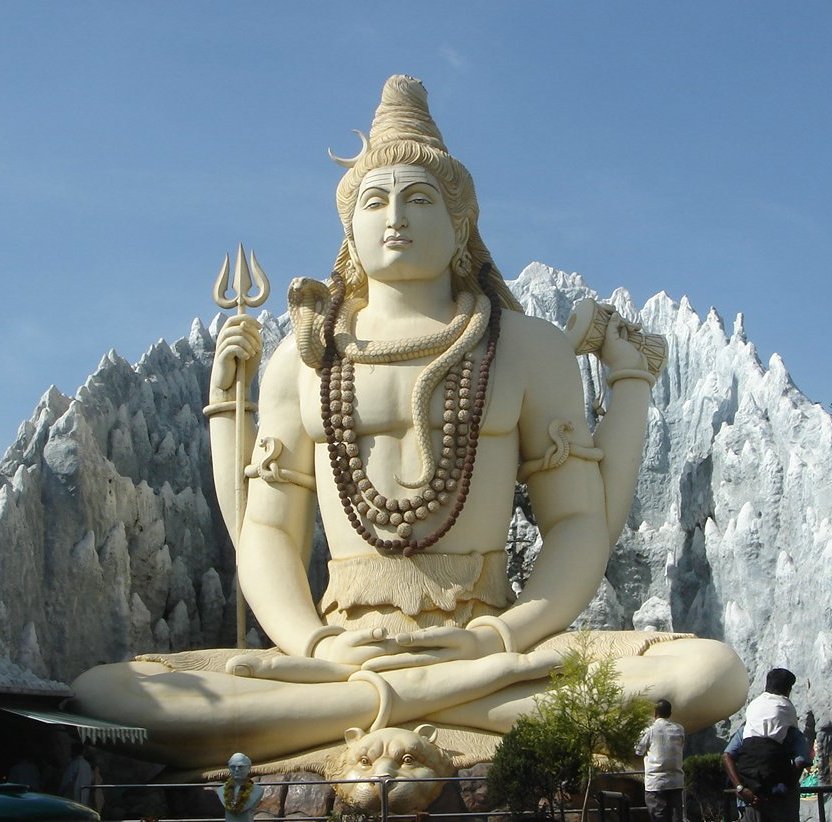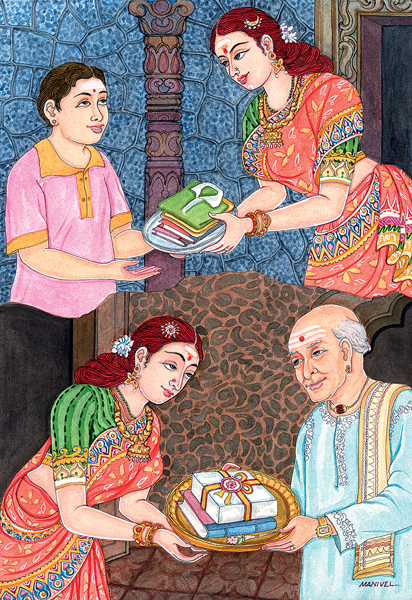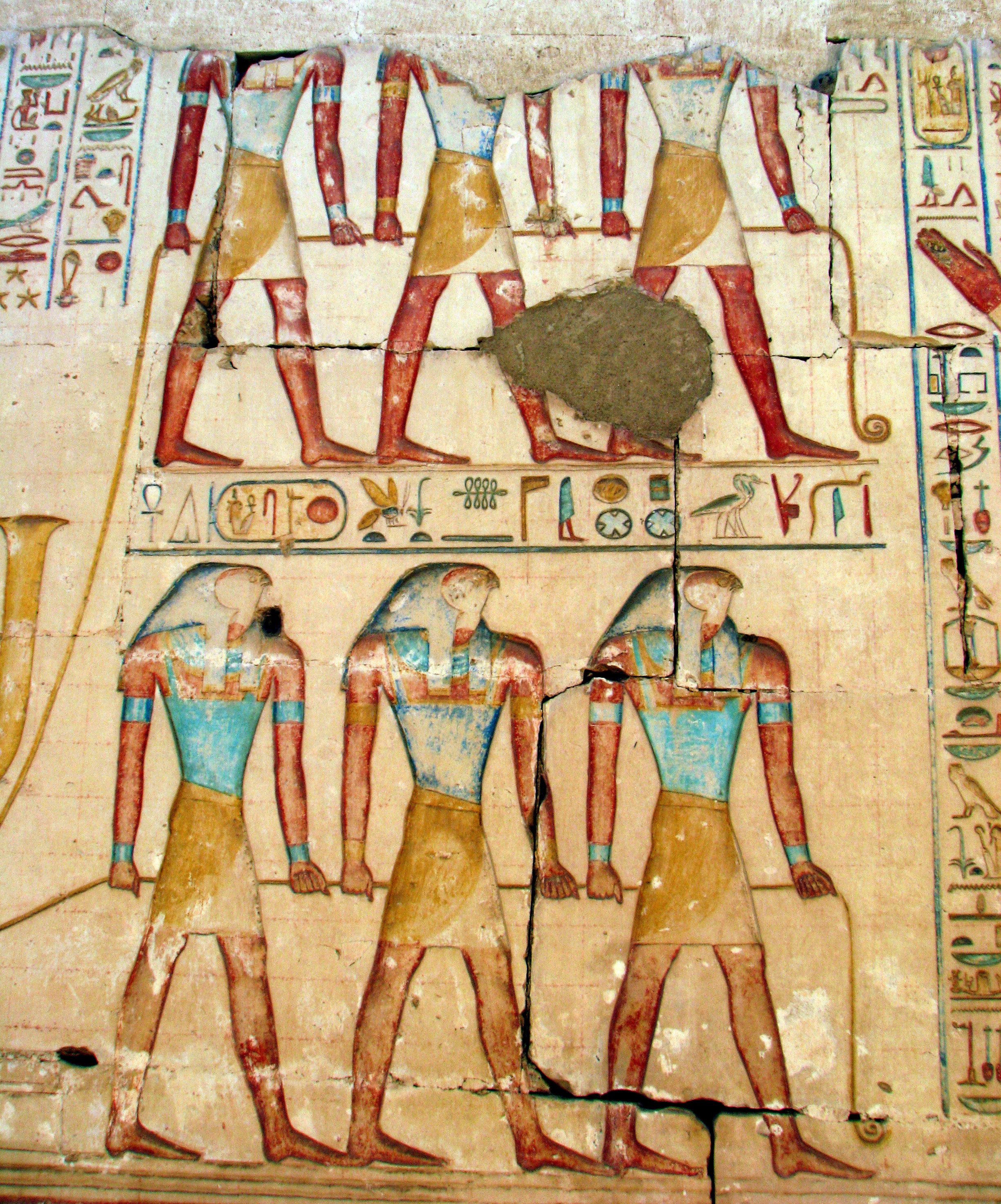|
Garbha Upanishad
The ''Garbha Upanishad'' ( sa, गर्भ उपनिषत्, Garbha Upaniṣad, lit=Esoteric Doctrine over the Embryo), or ''Garbhopanishad'' (), is one of the minor Upanishads, listed number 17 in the modern anthology of 108 Hindu Upanishadic texts. Written in Sanskrit, it is associated with the Krishna Yajurveda by some, and as a Vedantic Upanishad associated with the Atharvaveda by other scholars.Paul Deussen, Sixty Upanishads of the Veda, Volume 2, Motilal Banarsidass, , page 567 It is considered one of the 35 Samanya (general) Upanishads. The last verse of the Upanishad attributes the text to sage Pippalada, but the chronology and author of the text is unclear, and the surviving manuscripts are damaged, inconsistent with each other and incomplete. The Garbha Upanishad is a text that almost exclusively comments on medical and physiology-related themes, dealing with the theory of the formation and development of the human embryo and human body after birth. Paul Deussen ... [...More Info...] [...Related Items...] OR: [Wikipedia] [Google] [Baidu] |
Yajurveda
The ''Yajurveda'' ( sa, यजुर्वेद, ', from ' meaning "worship", and ''veda'' meaning "knowledge") is the Veda primarily of prose mantras for worship rituals.Michael Witzel (2003), "Vedas and Upaniṣads", in ''The Blackwell Companion to Hinduism'' (Editor: Gavin Flood), Blackwell, , pages 76-77 An ancient Vedic Sanskrit text, it is a compilation of ritual-offering formulas that were said by a priest while an individual performed ritual actions such as those before the yajna fire. Yajurveda is one of the four Vedas, and one of the scriptures of Hinduism. The exact century of Yajurveda's composition is unknown, and estimated by Witzel to be between 1200 and 800 BCE, contemporaneous with Samaveda and Atharvaveda. The Yajurveda is broadly grouped into two – the "black" or "dark" (''Krishna'') Yajurveda and the "white" or "bright" (''Shukla'') Yajurveda. The term "black" implies "the un-arranged, unclear, motley collection" of verses in Yajurveda, in contrast to ... [...More Info...] [...Related Items...] OR: [Wikipedia] [Google] [Baidu] |
Yajna
Yajna ( sa, यज्ञ, yajña, translit-std=IAST, sacrifice, devotion, worship, offering) refers in Hinduism to any ritual done in front of a sacred fire, often with mantras.SG Nigal (1986), Axiological Approach to the Vedas, Northern Book, , pages 80–81 Yajna has been a Vedic tradition, described in a layer of Vedic literature called Brahmanas, as well as Yajurveda. The tradition has evolved from offering oblations and libations into sacred fire to symbolic offerings in the presence of sacred fire ( Agni). Yajna rituals-related texts have been called the ''Karma-kanda'' (ritual works) portion of the Vedic literature, in contrast to ''Jnana-kanda'' (knowledge) portion contained in the Vedic Upanishads. The proper completion of Yajna-like rituals was the focus of Mimansa school of Hindu philosophy. Yajna have continued to play a central role in a Hindu's rites of passage, such as weddings. Modern major Hindu temple ceremonies, Hindu community celebrations, or monastic in ... [...More Info...] [...Related Items...] OR: [Wikipedia] [Google] [Baidu] |
Brahman
In Hinduism, ''Brahman'' ( sa, ब्रह्मन्) connotes the highest universal principle, the ultimate reality in the universe.P. T. Raju (2006), ''Idealistic Thought of India'', Routledge, , page 426 and Conclusion chapter part XII In major schools of Hindu philosophy, it is the material, efficient, formal and final cause of all that exists.For dualism school of Hinduism, see: Francis X. Clooney (2010), ''Hindu God, Christian God: How Reason Helps Break Down the Boundaries between Religions'', Oxford University Press, , pages 51–58, 111–115;For monist school of Hinduism, see: B. Martinez-Bedard (2006), ''Types of Causes in Aristotle and Sankara'', Thesis – Department of Religious Studies (Advisors: Kathryn McClymond and Sandra Dwyer), Georgia State University, pages 18–35 It is the pervasive, infinite, eternal truth, consciousness and bliss which does not change, yet is the cause of all changes. ''Brahman'' as a metaphysical concept refers to the singl ... [...More Info...] [...Related Items...] OR: [Wikipedia] [Google] [Baidu] |
Yoga
Yoga (; sa, योग, lit=yoke' or 'union ) is a group of physical, mental, and spiritual practices or disciplines which originated in ancient India and aim to control (yoke) and still the mind, recognizing a detached witness-consciousness untouched by the mind (''Chitta'') and mundane suffering ('' Duḥkha''). There is a wide variety of schools of yoga, practices, and goals in Hinduism, Buddhism, and Jainism,Stuart Ray Sarbacker, ''Samādhi: The Numinous and Cessative in Indo-Tibetan Yoga''. SUNY Press, 2005, pp. 1–2.Tattvarthasutra .1 see Manu Doshi (2007) Translation of Tattvarthasutra, Ahmedabad: Shrut Ratnakar p. 102. and traditional and modern yoga is practiced worldwide. Two general theories exist on the origins of yoga. The linear model holds that yoga originated in the Vedic period, as reflected in the Vedic textual corpus, and influenced Buddhism; according to author Edward Fitzpatrick Crangle, this model is mainly supported by Hindu scholars. According ... [...More Info...] [...Related Items...] OR: [Wikipedia] [Google] [Baidu] |
Samkhya
''Samkhya'' or ''Sankya'' (; Sanskrit सांख्य), IAST: ') is a dualistic school of Indian philosophy. It views reality as composed of two independent principles, ''puruṣa'' ('consciousness' or spirit); and ''prakṛti'', (nature or matter, including the human mind and emotions). ''Puruṣa'' is the witness-consciousness. It is absolute, independent, free, beyond perception, above any experience by mind or senses, and impossible to describe in words. Unmanifest ''prakriti'' is matter or nature. It is inactive, unconscious, and is a balance of the three ''guṇas'' (qualities or innate tendencies), namely ''sattva'' , ''rajas'', and '' tamas''. When prakṛti comes into contact with Purusha this balance is disturbed, and Prakriti becomes manifest, evolving twenty-three tattvas, namely intellect (buddhi, mahat), ego (ahamkara) mind ( manas); the five sensory capacities; the five action capacities; and the five "subtle elements" or "modes of sensory content" (''tanma ... [...More Info...] [...Related Items...] OR: [Wikipedia] [Google] [Baidu] |
Vishnu
Vishnu ( ; , ), also known as Narayana and Hari, is one of the principal deities of Hinduism. He is the supreme being within Vaishnavism, one of the major traditions within contemporary Hinduism. Vishnu is known as "The Preserver" within the Trimurti, the triple deity of supreme divinity that includes Brahma and Shiva. Gavin Flood, An Introduction to Hinduism' (1996), p. 17. In Vaishnavism, Vishnu is the supreme being who creates, protects, and transforms the universe. In the Shaktism tradition, the Goddess, or Adi Shakti, is described as the supreme Para Brahman, yet Vishnu is revered along with Shiva and Brahma. Tridevi is stated to be the energy and creative power ( Shakti) of each, with Lakshmi being the equal complementary partner of Vishnu. He is one of the five equivalent deities in Panchayatana puja of the Smarta tradition of Hinduism. According to Vaishnavism, the highest form of Ishvara is with qualities ( Saguna), and have certain form, but is limit ... [...More Info...] [...Related Items...] OR: [Wikipedia] [Google] [Baidu] |
Shiva
Shiva (; sa, शिव, lit=The Auspicious One, Śiva ), also known as Mahadeva (; ɐɦaːd̪eːʋɐ, or Hara, is one of the principal deities of Hinduism. He is the Supreme Being in Shaivism, one of the major traditions within Hinduism. Shiva is known as "The Destroyer" within the Trimurti, the Hindu trinity which also includes Brahma and Vishnu. In the Shaivite tradition, Shiva is the Supreme Lord who creates, protects and transforms the universe. In the goddess-oriented Shakta tradition, the Supreme Goddess ( Devi) is regarded as the energy and creative power (Shakti) and the equal complementary partner of Shiva. Shiva is one of the five equivalent deities in Panchayatana puja of the Smarta tradition of Hinduism. Shiva has many aspects, benevolent as well as fearsome. In benevolent aspects, he is depicted as an omniscient Yogi who lives an ascetic life on Mount Kailash as well as a householder with his wife Parvati and his three children, Ganesha, Ka ... [...More Info...] [...Related Items...] OR: [Wikipedia] [Google] [Baidu] |
Karma
Karma (; sa, कर्म}, ; pi, kamma, italic=yes) in Sanskrit means an action, work, or deed, and its effect or consequences. In Indian religions, the term more specifically refers to a principle of cause and effect, often descriptively called the principle of karma, wherein intent and actions of an individual (cause) influence the future of that individual (effect): Good intent and good deeds contribute to good karma and happier rebirths, while bad intent and bad deeds contribute to bad karma and bad rebirths. As per some scripture, there is no link of rebirths with karma. The concept of karma is closely associated with the idea of rebirth in many schools of Indian religions (particularly Hinduism, Buddhism, Jainism and Sikhism), as well as Taoism.Eva Wong, Taoism, Shambhala Publications, , pp. 193 In these schools, karma in the present affects one's future in the current life, as well as the nature and quality of future lives—one's ''saṃsāra''. This concept ... [...More Info...] [...Related Items...] OR: [Wikipedia] [Google] [Baidu] |
List Of Multiple Births
This is a list of multiple births, consisting of notable higher order (4+) multiple births and pregnancies. Twins and triplets are sufficiently common to have their own separate articles. With the use of reproductive technology such as fertility drugs and in vitro fertilization (IVF) such births have become increasingly common. This list contains only multiple births which have some claim to notability, such as being the first recorded in a country, the first to survive to adulthood in a country, the heaviest, lightest or longest lived (globally), or having had substantial media coverage. Cases by number Twins (2) Triplets (3) Quadruplets (4) * The Smith quadruplets, born 1750 in Kinsale, Ireland to a fisherman's wife. * The Fisk quadruplets (born 26 August 1783), in Killingly, Connecticut, United States. Two boys (Ephraim and Joseph) and two girls (Keziah and Mary) all survived to adulthood. * Dominica, 1790: According to ''The Times'', a Dr. Giuseppe of Dominica reporte ... [...More Info...] [...Related Items...] OR: [Wikipedia] [Google] [Baidu] |
Atman (Hinduism)
Atman or Ātman may refer to: Film * ''Ātman'' (1975 film), a Japanese experimental short film directed by Toshio Matsumoto * ''Atman'' (1997 film), a documentary film directed by Pirjo Honkasalo People * Pavel Atman (born 1987), Russian handball player Religion * ''Ātman'' (Jainism), or ''Jīva'', a philosophical term used within Jainism to identify the soul * ''Ātman'' (Hinduism), meaning "Self", a philosophical concept common to all schools of Hindu philosophy * ''Ātman'' (Buddhism), ''attā'' or ''attan'', a reference to the essential self ** '' Anattā'' or ''anātman'' — "not-self", central concept in Buddhism * ''Atman jnana'' — "knowledge" in the context of Indian philosophy and religions See also * Ataman, a title of Cossack and haidamak leaders of various kinds * World Soul (other) * Atma (other) * Divine soul (other) Divine soul in kabbalah is the source of good inclination and Godly desires. Divine soul may also refer to: * ... [...More Info...] [...Related Items...] OR: [Wikipedia] [Google] [Baidu] |
Soul
In many religious and philosophical traditions, there is a belief that a soul is "the immaterial aspect or essence of a human being". Etymology The Modern English noun '':wikt:soul, soul'' is derived from Old English ''sāwol, sāwel''. The earliest attestations reported in the ''Oxford English Dictionary'' are from the 8th century. In King Alfred's translation of ''De Consolatione Philosophiae'', it is used to refer to the immaterial, spiritual, or thinking aspect of a person, as contrasted with the person's physical body; in the Vespasian Psalter 77.50, it means "life" or "animate existence". The Old English word is cognate with other historical Germanic languages, Germanic terms for the same idea, including Old Frisian ''sēle, sēl'' (which could also mean "salvation", or "solemn oath"), Gothic language, Gothic ''saiwala'', Old High German ''sēula, sēla'', Old Saxon ''sēola'', and Old Norse ''sāla''. Present-day cognates include Dutch ''ziel'' and German ''Seele''. Re ... [...More Info...] [...Related Items...] OR: [Wikipedia] [Google] [Baidu] |







